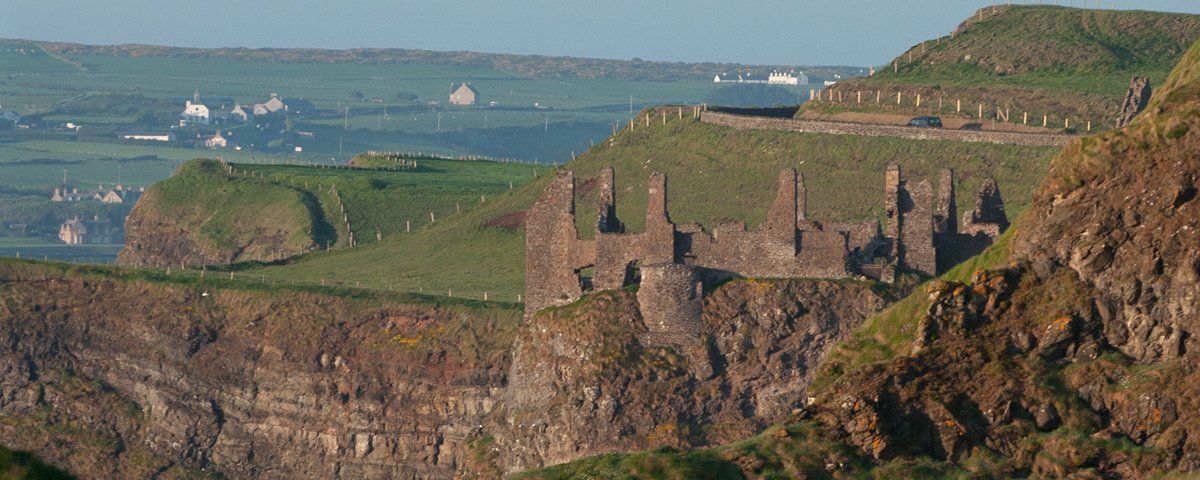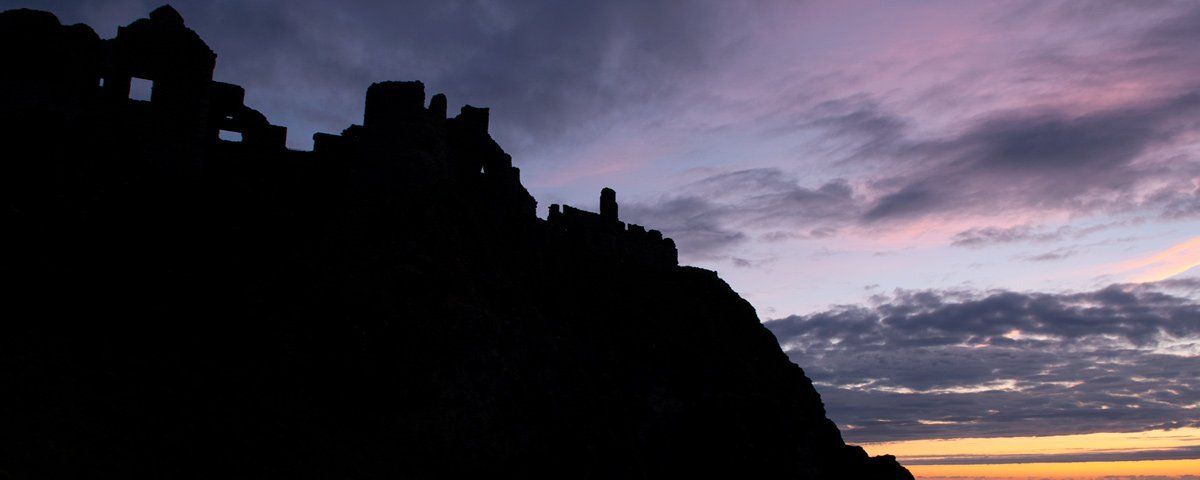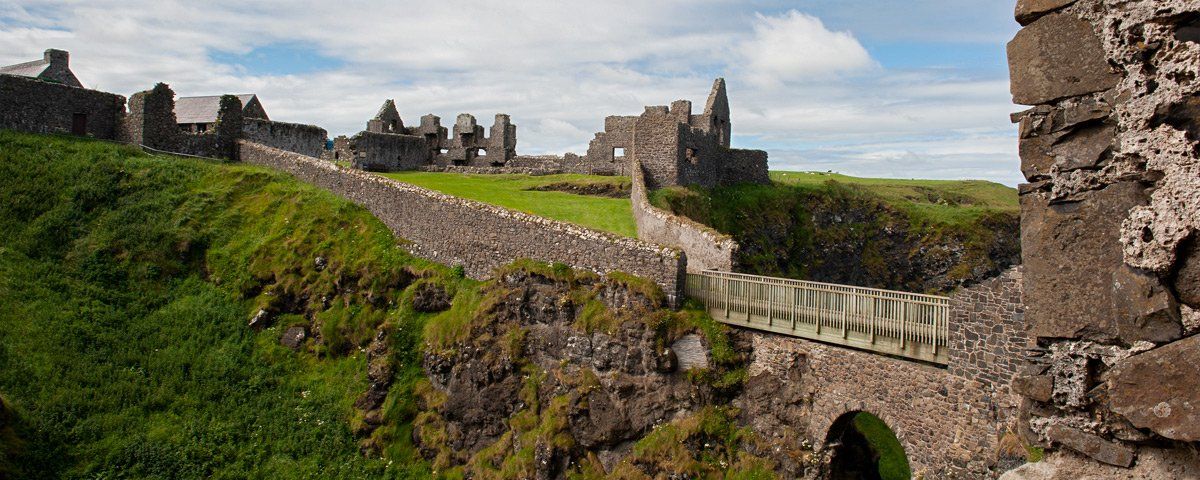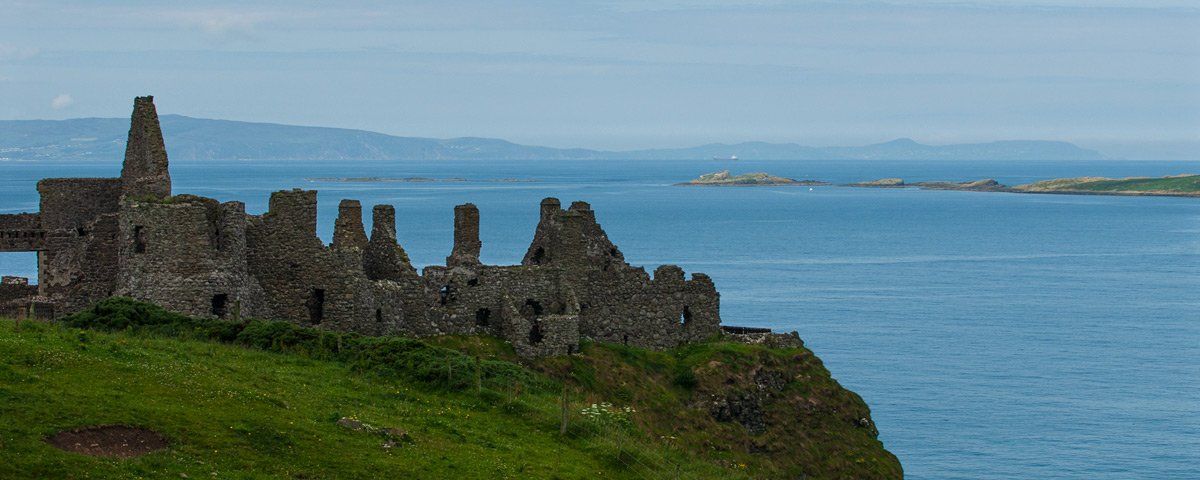Sorley Boy MacDonnell
Sorely Boy was born in 1505, the general consensus is that it was at Dunaneanie Castle (Ballycastle). He died at the age of 85 at Dunaneanie Castle, a remarkable age for the turbulent times he lived in, his body was interred in Bonamargie Friary. Sorley had five brothers James, Colla, Angus, Alexander, Donal and several sisters. He belonged to the Scottish clan of the MacDonnells - an ancestor married Margery Bisset (Byset or MacEoin Byset) who was heiress to a large portion of land along the North Antrim coast and in the Glynns (Glens). James the eldest son inherited the title of 'Lord of Dunyveg and Antrim Glynns' but decided to return to his native Scottish Isles accompanied by his wife Agnes Campbell, he left Colla to rule the Glynns in his absence.
Colla married Evelyn MacQuillan which brought a tentative peace between the previous opposing clans. Colla had two sons, Gillaspick and Randal, Gillaspick died bullfighting at games in Ballycastle which were to celebrate his coming of age (probably at the Lammas Fair). In 1551 the MacDonnells ruled the Glynns of Antrim, so much so that the government saw them as a political threat and attempted to halt their expansion and power base by arresting Sorley Boy and placing him in Dublin Castle. James Croft was then sent with four ships to take Rathlin Island and capture Colla MacDonnell but the tables turned on their plans and Colla captured two high ranking members of the expedition, he held them ransom for the release of Sorley from Dublin Castle.
James handed the title of Lordship over to Sorley, who became one of the most powerful Scottish clansman in Ulster. He led the struggle between his clan and the MacQuillan's and after defeating them ruled over the Route. He became too powerful to be neglected by Queen Elizabeth I and her ministers who were also at the time having an uneasy relationship with Shane O'Neill. Queen Elizabeth set out to create friction between the two chieftains - sometimes favouring and winning the support of one against the other. Shane O'Neill defeated Sorley Boy near Coleraine in 1564 and 1565 he invaded the Glynns and at Ballycastle won a decisive victory, in which James MacDonnell and Sorley Boy were taken prisoners.
James died in captivity from wounds sustained during the battle. Sorley Boy remained in O'Neill's captive until 1567, when during an arranged meeting near Cushendun to cease hostilities between them, Shane was murdered. In 1575 after Sorley continued to reject terms and conditions being demanded by the English government the Lord Deputy Essex arrived in the north. Sorley had been warned and sent most of his family along with the women, children and older people to Raghery (Rathlin Island) for what he thought was safety. The Earl of Essex (General Walter Devereaux) with the approval of the Lord Deputy of Ireland Henry Sydney, sent the privateer Francis Drake with John Norreys (Norris) and a large contingent of soldiers to attacked the castle on Raghery.
Everyone on the Island died except for those who were well hid. Many had taken refuge in the castle which was subsequently besieged - stories tell of a deal being struck where everyone would be spared if they surrendered and left the castle, this was agreed but when the gates were opened they were massacred. It is estimated a total of 600 people died - only those who hid in the numerous sea caves survived. Sorley's family and those of many of his allies were amongst the dead. After this personal tragedy and the massacre of so many local people by Essex in 1575 which Sorley witnessed from the cliffs at Ballycastle, he planned and made a successful raid on Carrickfergus attacking the town and killing over 100 of the garrison.
He took all the cattle and corn and re-established his power and authority in the Glynns and the Route. His position was further strengthened by a formidable settlement of followers from the Scottish islands. The decisive battle for Sorley Boy McDonnell was the Battle of Aura in 1583 where he defeated the O'Neills, MacQuillan and an English force sent from Dublin. After this, he became too powerful to be ignored. Failing to remove him through complicity with the O'Neills and MacQuillans Queen Elizabeth had Sir John Perrot whom she had appointed as the Lord Deputy of Ireland in 1584, move against him.
Perrot along with the Earl of Osmode and Sir John Norris approached North Antrim from both the Bann and Glynns, Perrott lay siege to Dunluce on September 14th 1584 and on the third day the castle gave in and surrendered. Sorley Boy had managed to escape to Scotland but Perrott took the prize of his castle and helped himself to the much valued St. Columbkille Cross, along with other valuables from the castle which he sent to England as gifts. Within three months Sorley was back in North Antrim and announced a desire to become a loyal servant of the Crown, in return for his lands but there was no immediate response from the government, after Perrott left for Dublin in 1585, he re-took Dunluce and from there continued his bargaining with the English government.
Perrott wanted full submission from Sorley Boy and was ready to set out from Dublin to face him once again but Queen Elizabeth advised against it. Eventually, in 1586, Sorley's negotiations with the English government led to him obtaining a grant to himself and his heirs of all the Route between the rivers Bann and Bush, with other lands to the east, he was made Constable of Dunluce Castle and for the rest of his life, he gave no trouble to the English government. He died at Dunaneanie Castle in 1590 and is interred in Bonamargie Friary.








